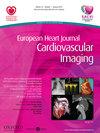The effect of hyperbaric oxygen therapy on myocardial function in post- covid syndrome patients: a randomized controlled trial
引用次数: 0
Abstract
Abstract Funding Acknowledgements Type of funding sources: None. Background Post-COVID-19 condition refers to a range of persisting physical and neurocognitive symptoms following SARS-CoV-2 infection. Recent evidence revealed that post-COVID syndrome patients may suffer from cardiac dysfunction and are at increased risk for a broad range of cardiovascular disorders. This randomized, sham-control, double-blind trial evaluated the effect of hyperbaric oxygen therapy (HBOT) on the cardiac function of post-COVID-19 patients with ongoing symptoms for at least three months after confirmed infection. Methods Sixty patients were randomized to receive 40 daily HBOT or sham sessions. They underwent echocardiography at baseline and 1-3 weeks after the last protocol session. Results Twenty-nine (48.3%) patients had reduced global longitudinal strain (GLS) at baseline. Of them, 13 (43.3%) and 16 (53.3%) were allocated to the sham and HBOT groups, respectively. Compared to the sham group, GLS significantly increased following HBOT (−17.8±1.1 to −20.2±1.0, p = 0.0001), with a significant group-by-time interaction (p = 0.041). Conclusion Post-COVID syndrome patients despite normal EF often have subclinical left ventricular dysfunction that is characterized by mildly reduced GLS. HBOT promotes left ventricular systolic function recovery in patients suffering from post COVID-19 condition. Further studies are needed to optimize patient selection and evaluate long-term outcomes.高压氧治疗对冠状病毒后综合征患者心肌功能的影响:一项随机对照试验
资金来源类型:无。covid -19后状态是指SARS-CoV-2感染后持续出现的一系列身体和神经认知症状。最近的证据显示,covid - 19后综合征患者可能患有心功能障碍,并且患各种心血管疾病的风险增加。这项随机、假对照、双盲试验评估了高压氧治疗(HBOT)对确诊感染后症状持续至少三个月的covid -19后患者心功能的影响。方法60例患者随机接受40次每日HBOT治疗或假治疗。他们在基线和最后一次治疗后1-3周接受超声心动图检查。结果29例(48.3%)患者在基线时整体纵向应变(GLS)降低。其中,假手术组13只(43.3%),HBOT组16只(53.3%)。与假手术组相比,HBOT后GLS显著升高(- 17.8±1.1至- 20.2±1.0,p = 0.0001),组间时间交互作用显著(p = 0.041)。结论新冠肺炎后综合征患者虽然EF正常,但常出现以GLS轻度降低为特征的亚临床左心室功能障碍。HBOT促进COVID-19后患者左心室收缩功能恢复需要进一步的研究来优化患者选择和评估长期结果。
本文章由计算机程序翻译,如有差异,请以英文原文为准。
求助全文
约1分钟内获得全文
求助全文

 求助内容:
求助内容: 应助结果提醒方式:
应助结果提醒方式:


